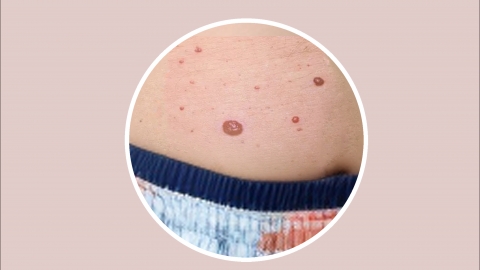What should I do about a hemangioma on my lip?
Generally, a hemangioma appearing on the lips may be caused by genetic factors, congenital vascular developmental abnormalities, hormonal fluctuations, local trauma or irritation, and abnormal proliferation of vascular endothelial cells. It is recommended to seek timely medical consultation, identify the type, and then improve the condition under a doctor's guidance through observation, medication, or surgical treatment. Detailed explanations are as follows:

1. Genetic factors: A family history of hemangiomas indicates that inherited genes may predispose the blood vessels on the lips to developmental abnormalities, increasing the likelihood of hemangioma formation, which may be accompanied by mild vascular malformations in other areas. Regular checkups of the lips and entire body are recommended. If the hemangioma is small and asymptomatic, follow-up every 3–6 months is sufficient.
2. Congenital vascular developmental abnormalities: During embryonic development, abnormal differentiation of lip blood vessels may lead to benign hemangiomas, commonly seen in infants and young children, with some cases potentially regressing with age. If the hemangioma shows no significant growth, observation until school age is acceptable. During this time, use soft utensils for feeding to avoid trauma.
3. Hormonal fluctuations: Increased estrogen and progesterone levels during puberty or hormonal changes during pregnancy may stimulate vascular proliferation on the lips, resulting in hemangiomas accompanied by mild swelling. Maintain lip hygiene and avoid lip-licking or biting. Use mild lip balm to prevent dryness.
4. Local trauma or irritation: After injuries such as lip bites or bumps, abnormal vascular proliferation during the healing process may lead to hemangioma formation, accompanied by localized elevation. Immediately after injury, clean the area with warm water and apply recombinant human epidermal growth factor gel to promote normal healing. If a hemangioma has already formed, topical medications such as propranolol hydrochloride gel, imiquimod cream, or timolol eye drops may be used under medical guidance to inhibit proliferation.
5. Abnormal proliferation of vascular endothelial cells: Excessive proliferation of vascular endothelial cells on the lips may lead to strawberry-like or cavernous hemangiomas, which may gradually enlarge and affect appearance. Laser therapy can be used to close abnormal blood vessels and reduce the size of the hemangioma. If appearance or eating is affected, surgical excision may be performed to completely remove the lesion. Postoperative care is essential to prevent infection.
In daily life, keep the lips moisturized with non-irritating lip balm to avoid dryness and cracking. Avoid spicy or excessively hot foods. If the hemangioma rapidly enlarges, bleeds, or becomes infected, seek prompt medical review for treatment adjustment, to maintain lip health and aesthetics.






